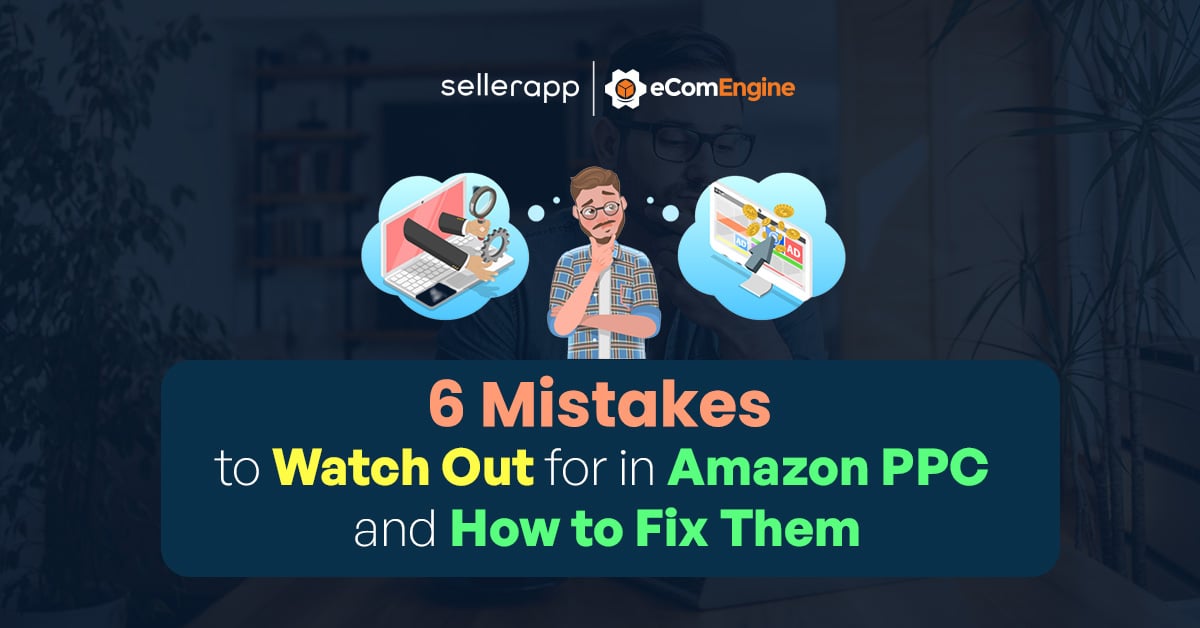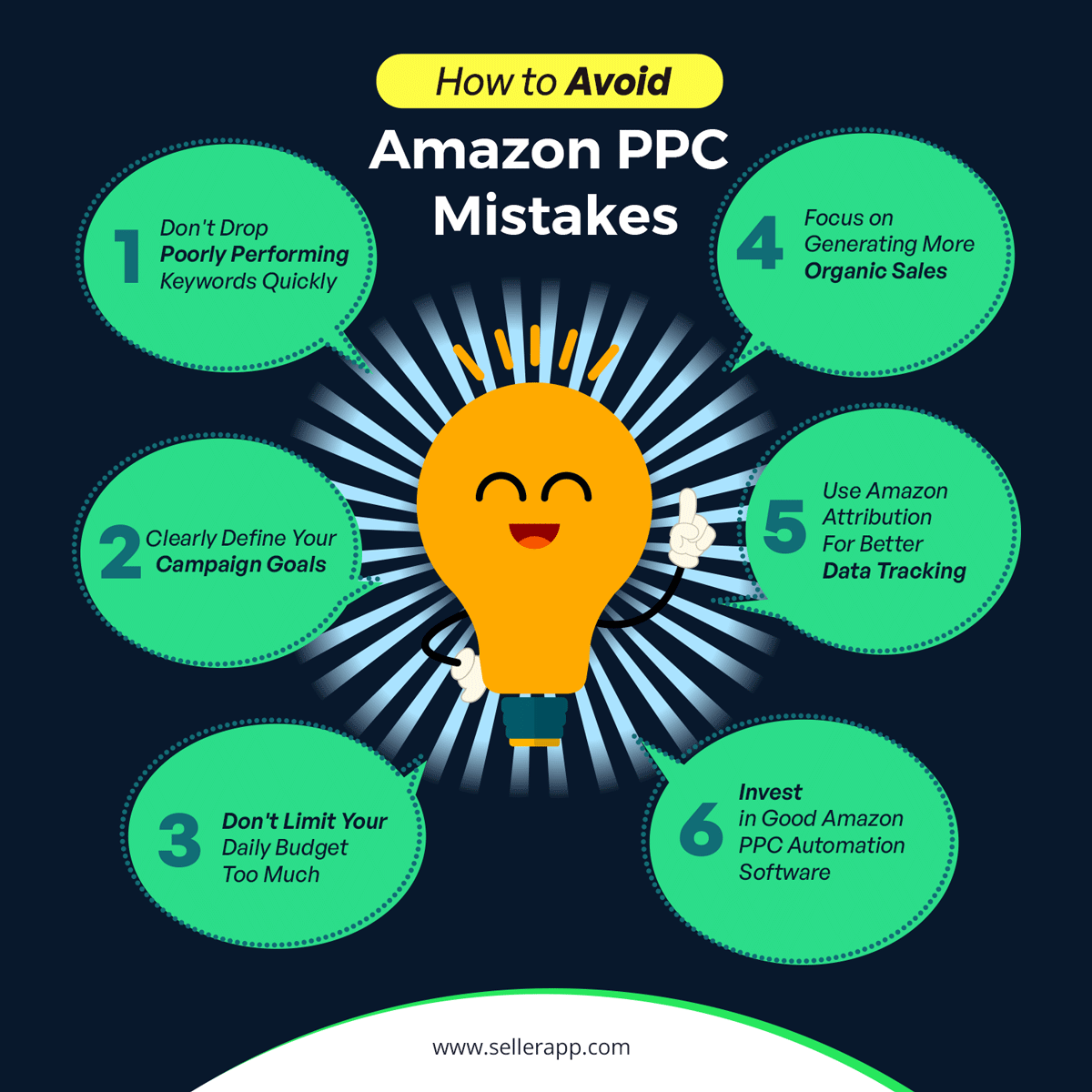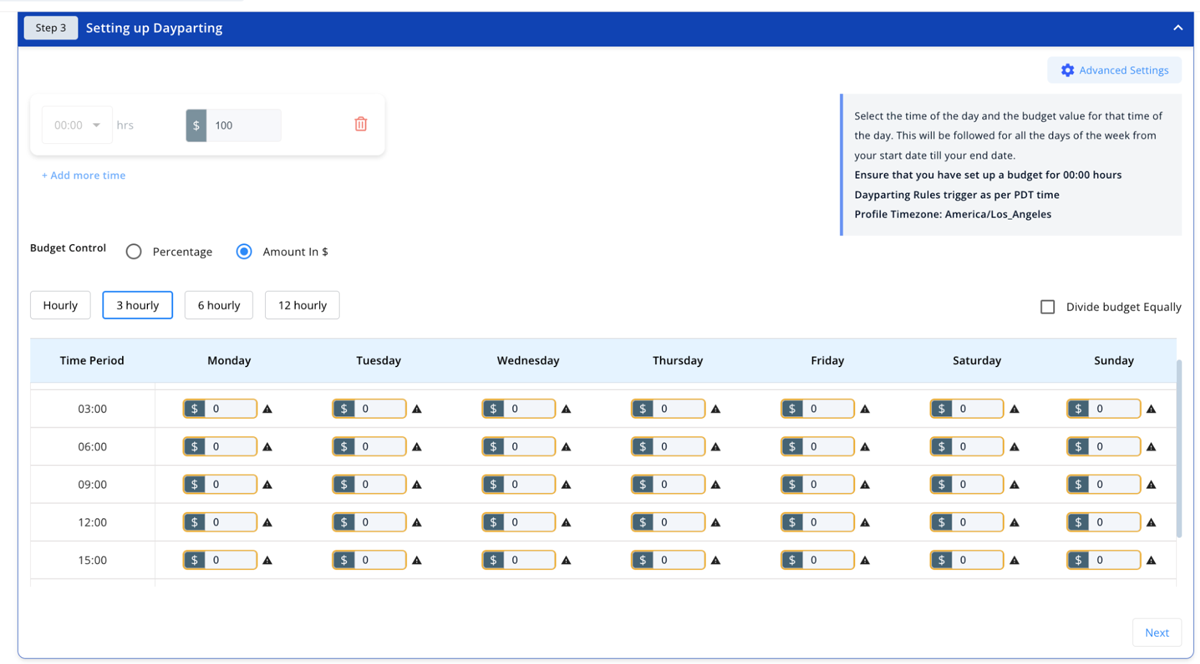Originally published on June 27, 2023, updated June 27, 2023
Menu
Join Our Email List
- Receive our monthly newsletter.
- Stay up to date on Amazon policies.
- Get tips to grow your business.
Find out which mistakes you may be making with your Amazon PPC advertising and how to solve them in this guide from SellerApp.
In the world of Amazon, advertising plays a vital role in scaling a business.
In recent years, running ads on Amazon has become so important that its share of global advertising spending has been predicted to reach $230 million in 2023.
However, setting up an Amazon advertising strategy and analyzing the results is a nightmare for most. Advertisers often look for shortcuts, but quick fixes usually prove ineffective in the long run.
Successful Amazon PPC (pay-per-click) strategies require thorough market and product research and carefully crafted strategies aligned with specific business goals.
In this article, we'll delve into the most common mistakes made by sellers in Amazon PPC advertising and provide you with actionable solutions to avoid them. Whether you're a big brand or a smaller seller, adopting a strategic mindset can lead to more success in your advertising campaigns.

Here are the top six common mistakes of Amazon PPC advertising.
Advertising on Amazon is becoming increasingly costly each day, with the average CPC (cost-per-click) growing from $0.76 dollars to $0.96 dollars.
Without a clear understanding of your advertising goals and a well-crafted strategy, advertising on Amazon can quickly drain your budget without generating a significant return on investment. Don't risk burning your ad spend - take the time to develop a solid plan before diving into Amazon advertising.
You often hear other sellers say, “Start your advertising journey with an automatic campaign.”
However, this doesn’t show the complete picture. You need to understand more of your business's nuances before formulating advertising strategies.
To gain a better understanding, here are some goals and recommended actions for getting there:
Most sellers don’t structure their campaigns properly and then pull their hair out, thinking campaign optimization is not for them.
For example, many merchants will place all their products within the same ad group or group product variations in different campaigns.
Adding multiple products in one campaign makes it extremely difficult to understand which items generate more clicks and sales and which ones do not.
Here's the campaign structuring framework we use at SellerApp to organize our campaign. We take into account the products with the highest budget allocation and assess the budget distribution, keyword or ASIN targeting, and campaign strategies to decide the product to add to a campaign.
{Ad Type} – {Campaign Type} – {Targeting Type}- {Product} – {Strategy}
For example:
Once you have a campaign structure in place, don’t change it frequently because it would be challenging to extrapolate old data.
Many sellers don’t want to use manual campaigns because these are difficult to manage. But only running automatic campaigns won't generate a good ROI (return on investment) in the long run.
Auto campaigns lack bid adjustment and match type selection for search terms and ASINs, leading to potentially irrelevant ad placements and budget wastage.
These campaigns can also be more costly because Amazon might bid higher on highly competitive (and not always relevant) keywords, which can eat up your ad budget very quickly.
By pairing auto campaigns with manual campaigns, you can unlock a multitude of benefits, including:
By combining both automatic and manual targeting, you can reduce the cost of advertisement and get the most out of your campaign.
It's crucial to bid on your brand's keywords if you want to increase conversions. There are numerous reasons why this practice is essential.
First, customers who have already purchased and are familiar with your brand can easily find you when searching for your specific brand terms. This helps to maintain customer loyalty and drives repeat purchases.
Second, bidding on your brand's keywords makes it more challenging for your competitors to bid on those terms and display their products alongside your listings, potentially diverting your customers to their offerings. By actively bidding on your brand keywords, you can maintain your brand's visibility and prevent competitors from encroaching on your market share.
Third, customers searching with brand keywords are often further down the sales funnel and more likely to convert. By bidding on the brand keyword, you can capture these highly qualified leads and improve your conversion rates.
Related reading: 4 Ways to Use Your Top Amazon Product Review Keywords
Focusing on the wrong metrics can be a costly mistake for Amazon PPC advertisers. It can lead to inaccurate decision-making and ineffective optimizations, ultimately hindering campaign success.
An Amazon PPC campaign can have many metrics, including:
Not all of these metrics will be relevant to every seller. You should focus on those that align with your specific business goal and size.
For example, if the goal is to improve sales, then you should track the total number of sales generated, total revenue, and if the ACoS is lower than the target.
If the goal is to increase visibility and traffic, track impressions and clicks on your ads. More impressions and clicks indicate better visibility and traffic. Lastly, if the goal is to improve ad efficiency and ROI, track the conversion rate, CPC, and RoAS. A higher RoAS indicates better campaign profitability.
A close look at your campaign performance can help you understand the current performance of your campaigns and help you make better decisions.
You can’t set up an Amazon PPC advertising campaign and expect it to perform from the start. You have to let the campaign run long enough to collect sufficient data, which you can analyze to optimize the campaigns to maximize profit.
For example, if you launched a campaign recently, it should run at least seven days before you make any changes. You do not want to work with insufficient data.
Similarly, some sellers adjust the bids too quickly, which is another mistake. Similar to Google and Facebook ad campaigns, Amazon also has an attribution period of 14 days.
Like the perfect recipe, a successful Amazon PPC advertising campaign needs all the right ingredients in the right proportions.
It's not just about tossing in a bunch of keywords and hoping for the best. You need a well-thought-out strategy, accurate targeting, and a keen understanding of your goals and metrics.
But we all know mistakes happen. And when they do, it can cost you big time. So, how can you avoid common Amazon PPC pitfalls?

Here's a common mistake many sellers make: they eliminate poor-performing keywords from their campaign without a second thought. But what if I told you there's a smarter way to handle these underperformers?
Before axing any keyword, pause and analyze its performance over a considerable period. Why is it underperforming? Is it due to seasonality or the timing of the bid?
If you notice performance spikes during certain periods and drops during others, it's a sign that these keywords are seasonal and still hold potential.
Instead of eliminating them, reduce their bids for low-season and increase bids for the high-season to bring more sales.
This might sound obvious, but you'd be surprised how often this crucial step is overlooked. Without clear goals, your Amazon PPC campaign is like a ship without a compass - you're just drifting aimlessly.
First, map out your business goals. Then, define what you want to achieve with your advertising efforts. Your PPC campaigns will only give the desired results when tied to a particular business goal.
For instance, if you're looking to build brand awareness, focus on getting impressions and traffic. Launch Amazon Sponsored Product ads and specify your target for high conversions if boosting sales is your goal. Doing this allows you to efficiently allocate your ad budget and keep your campaign on track.
If you're new to Amazon PPC advertising, being cautious with your budget is understandable. However, if you hit your daily budget every day, it indicates that you need to increase the daily budget to gain more clicks and sales.
Managing an Amazon PPC campaign can be time-consuming, and many advertisers shy away from automation tools because of the cost.
However, it's important to acknowledge the value of investing in these tools. They have the ability to streamline your ad budget, reduce time spent on management, and uncover insights that manual processes cannot.
That’s where the SellerApp Advertising tool comes in. It lets you create custom rules based on your campaign goals.
You can create rules to:

With advanced AI at its core, SellerApp finds the optimal bids for your campaigns, helping you hit the bulls-eye in targeting your audience and boosting conversions. Sign up to try the automation features yourself.
Don't focus solely on generating sales through the PPC campaigns. Your ultimate goal should be to boost the product ranking to the top of organic search results to maximize organic sales. It will reduce your advertising budget and generate more profit for your business.
So, invest in generating more sales, reviews, and ratings (software like FeedbackFive can help!) for your product, which can boost your organic ranking.
If you're enrolled in the Amazon Brand Registry, you have access to a wealth of Amazon tools, like Amazon Attribution. This tool is a game-changer for tracking metrics on and off Amazon across various platforms.
Use Amazon Attribution to understand customer demographics and gain insights into which ad strategies are working and which aren’t.
Navigating the complex waters of Amazon PPC advertising can be daunting. Crafting an efficient campaign structure, making smart decisions about keywords, and fine-tuning your budget all require careful attention and strategic planning. However, with the right guidance and a team of experts at your side, you can easily avoid these common PPC pitfalls and lay a solid foundation for your Amazon advertising journey.
This is where SellerApp's PPC Management Services come in. As trusted partners in your Amazon growth journey, we bring to the table a wealth of experience in assisting renowned brands like Phillips and Coca-Cola to craft comprehensive, result-oriented advertising strategies.
Originally published on June 27, 2023, updated June 27, 2023
This post is accurate as of the date of publication. Some features and information may have changed due to product updates or Amazon policy changes.
These Stories on Advertising
14321 Winter Breeze Drive
Suite 121 Midlothian, VA 23113
Call us: 800-757-6840





Copyright© 2007-2025 eComEngine, LLC. All Rights Reserved. eComEngine®, FeedbackFive®, RestockPro®, and SellerPulse® are trademarks or registered trademarks of eComEngine, LLC. Amazon's trademark is used under license from Amazon.com, Inc. or its affiliates.
Comments (1)